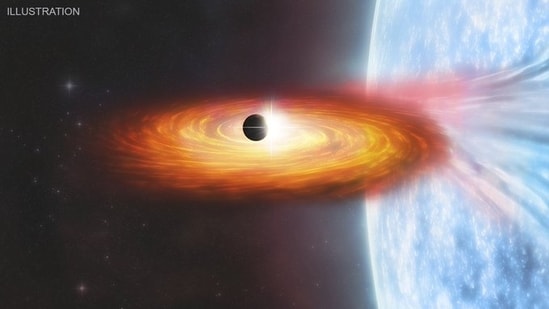First planet beyond our galaxy discovered. It's 28 million light-years away
The first exoplanet discovered was in 1992 and, since then, most exoplanets found have been less than 3,000 light-years from Earth.
For the first time, signs of a planet transiting a star outside of the Milky Way galaxy may have been detected. “Chandra scientists have found the first possible planet candidate outside of our galaxy! Located about 28 million light years from Earth in galaxy M51, it's thousands of times farther away than all the other exoplanets detected in our Milky Way,” the Chandra X-ray Observatory tweeted on Monday.

The potential exoplanet, called M51-ULS-1b, lies 28 million light-years away in the spiral galaxy Messier 51 (M51), also known as the Whirlpool galaxy. "We are trying to open up a whole new arena for finding other worlds," Rosanne Di Stefano, an astrophysicist at the Harvard-Smithsonian Center for Astrophysics who led the study which found this object, said in a statement.
According to the Chandra X-ray Observatory, this new discovery is based on transits, where the passage of a planet in front of a star blocks some of the star's light and yields a characteristic dip in brightness that can be detected by telescopes. This general technique has already been used to find thousands of exoplanets.
For this study, astronomers used Nasa's Chandra X-ray Observatory and the European Space Agency's XMM-Newton space telescope to look at three galaxies beyond the Milky Way. In total, they looked at 55 different systems in M-51, the Whirlpool galaxy, 64 systems in Messier 101 (M-101), or the "Pinwheel galaxy," and 119 systems in Messier 104, or the “Sombrero galaxy".
To spot the planet, the team led by Di Stefano used Chandra to look for dips in the brightness of X-rays. They found the possible exoplanet in the Whirlpool galaxy in a binary system orbiting two large objects: either a neutron star or a black hole which orbits a massive companion star.
The transit, they witnessed, lasted a total of about three hours and the X-ray emissions dipped all the way to zero. This helped them to figure out that the object is likely approximately the size of Saturn and it orbits the neutron star (or a black hole) at a distance twice that of Saturn's distance from our sun.
The first exoplanet discovered was in 1992 and, since then, most exoplanets found have been less than 3,000 light-years from Earth.



